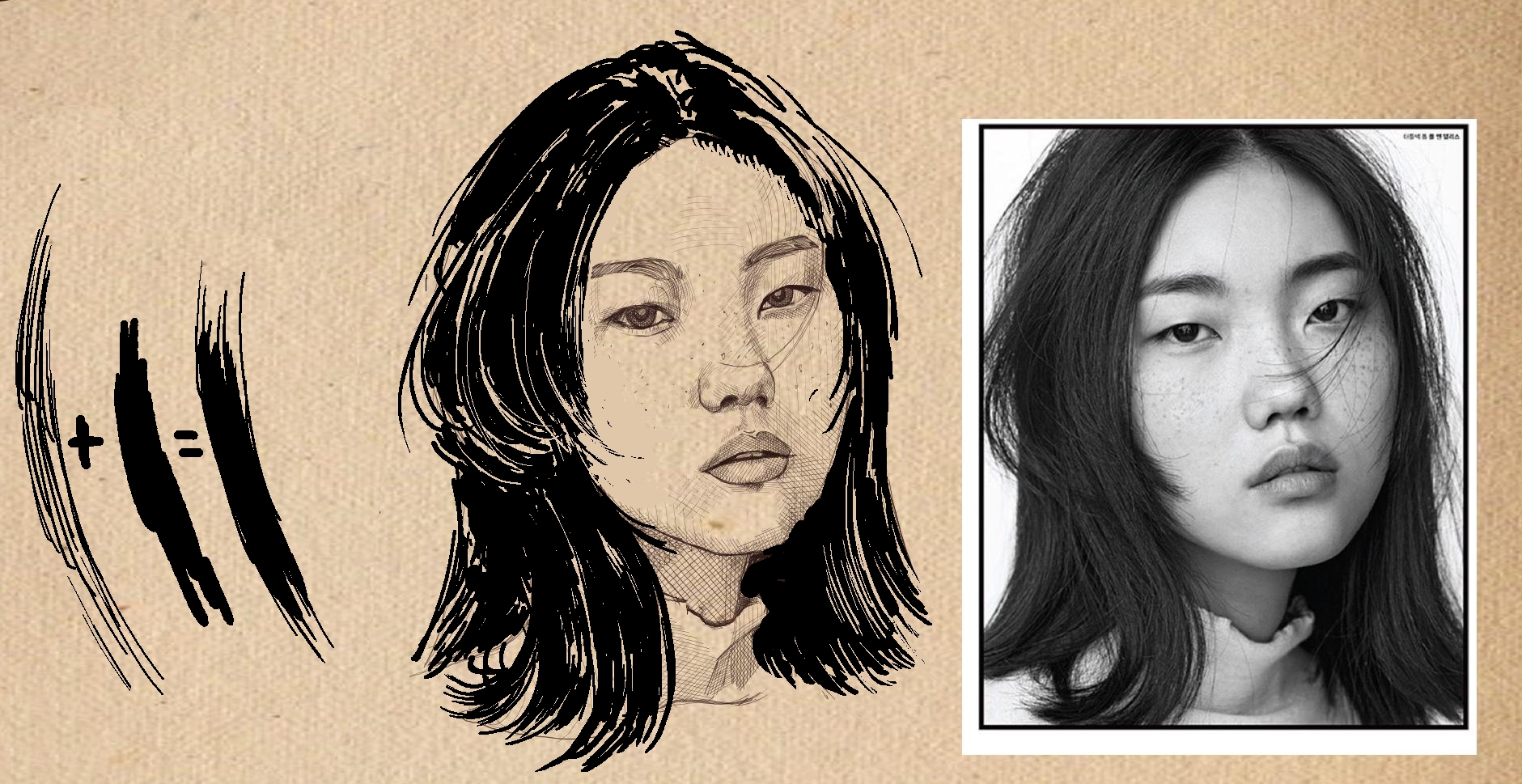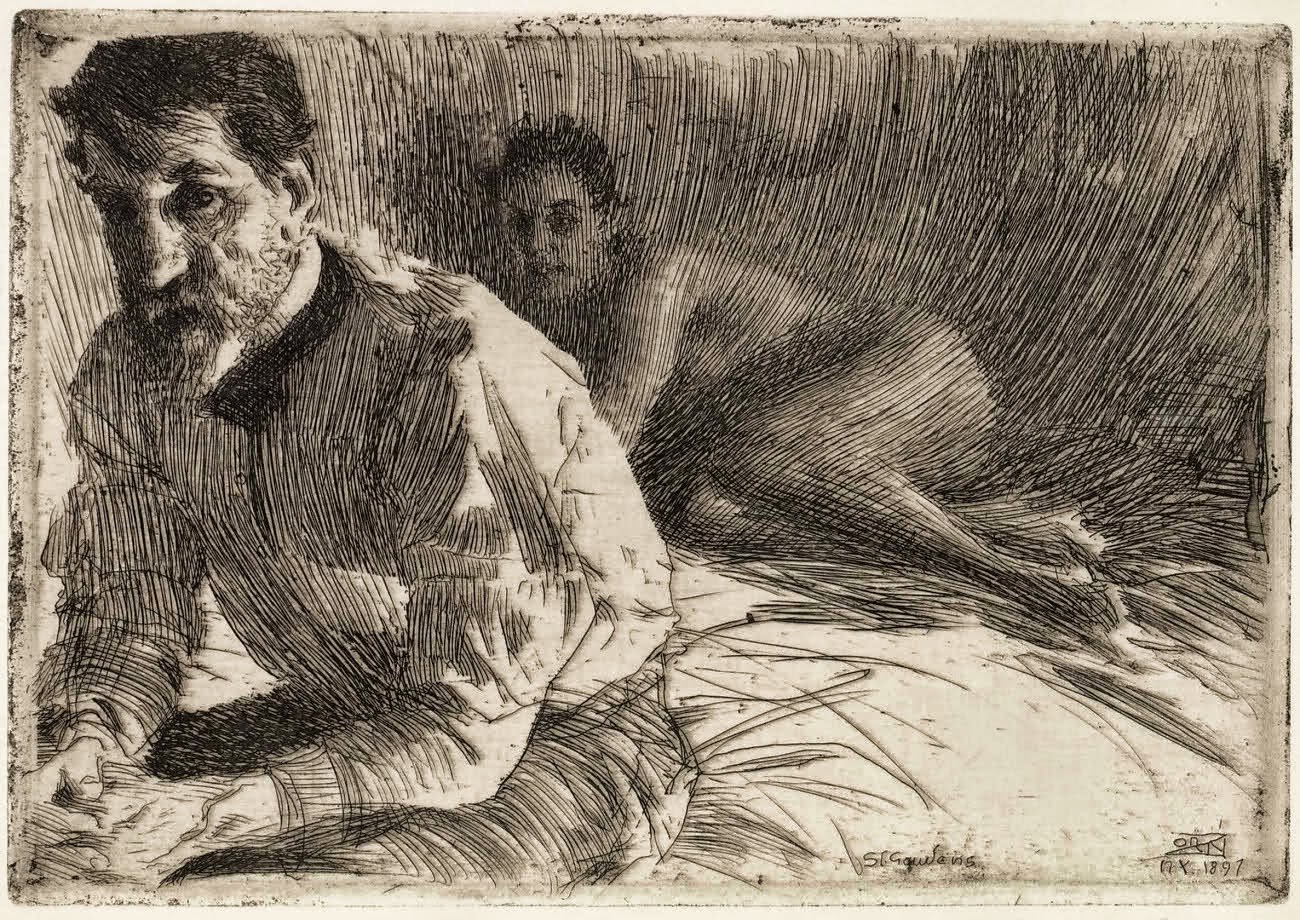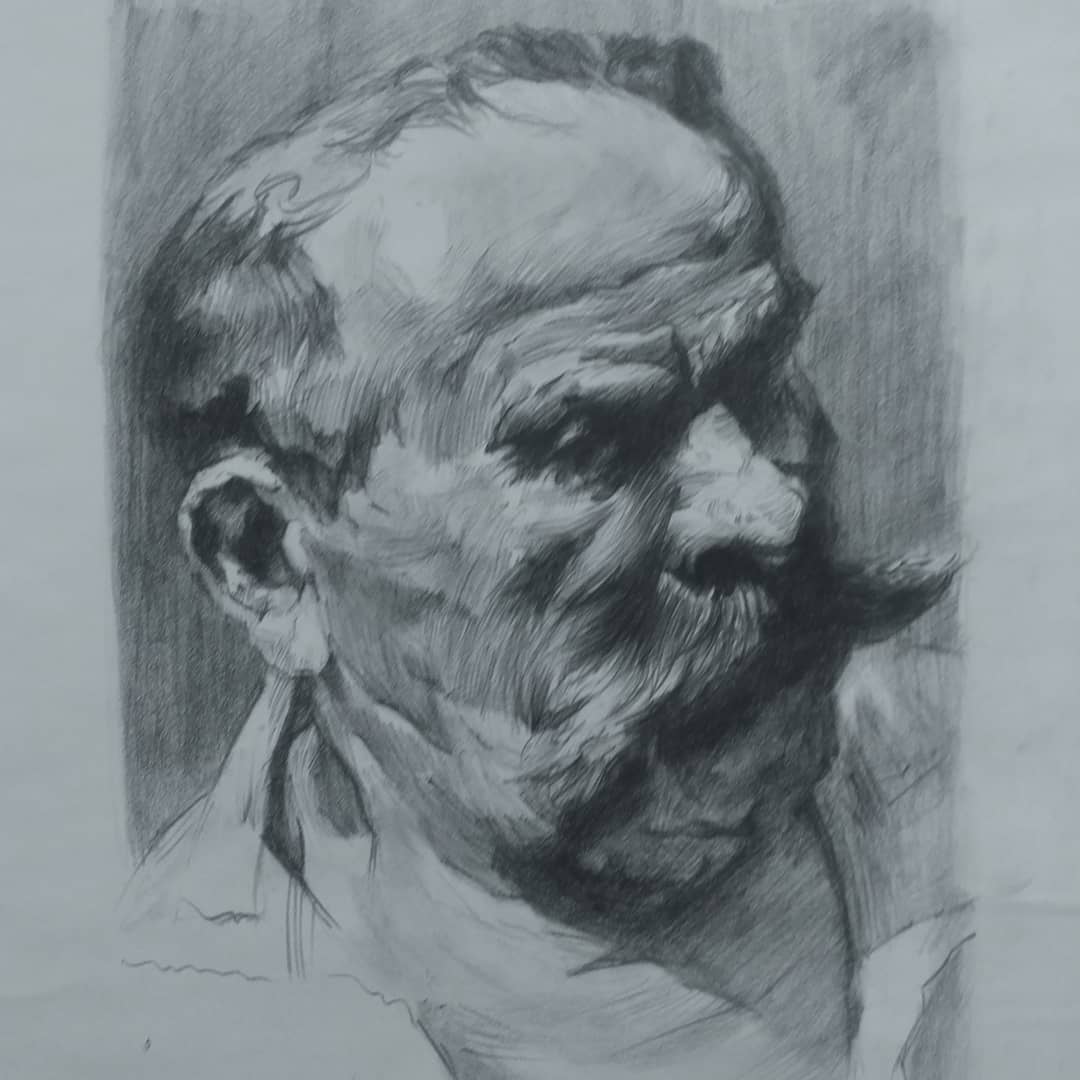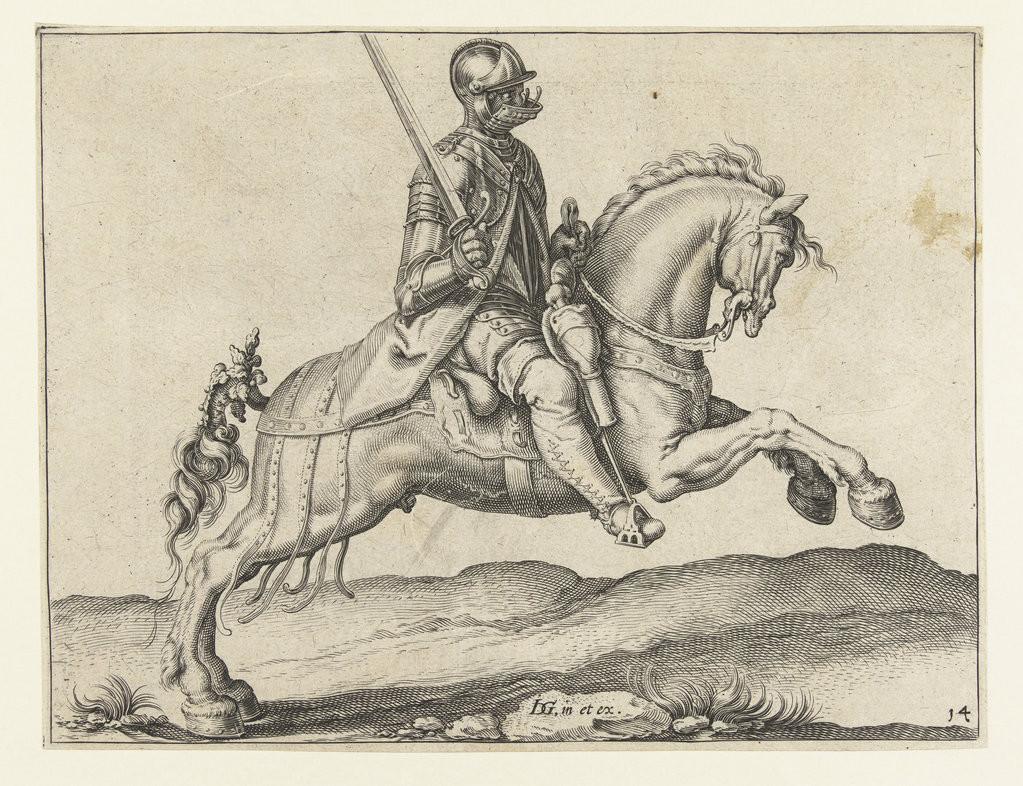mmm, nope. I'm not sure who that image is by but it's definitely not one by Anders Zorn. Probably someone inspired by or aping his approach and tagging it, or something like that.
I meant these, from the OG.
In terms of not being able to "reverse engineer". It's really up to you what you want to learn from. I was just a bit surprised with the manga focus I guess given you seemed to want to understand a naturalistic approach more. That said, anything that helps one simplify the complex into more understandable chunks can be useful. I guess I just like jumping straight into the deep end that I know I'd like to swim in XD.
You probably won't know what specific insight you will gain from doing any master study really. I never do. I have ideas on what I'd like to learn, but I always learn something novel about how the artist may have been thinking or approaching the work.
You can learn a lot simply by observing and making notes, but definitely best to attempt it as well imo.
Notice Zorn doesn't outline the edges of any form with a single line, it's all built into the way the value arrangement is developed. He also uses directional rhythms for his linework with some thought to the form's planes/direction as well as the overall composition's flow, instead of the more prescriptive, hatching consistent directions across the piece. Also note how he covers much more ground with fewer lines, and yet, the naturalistic read is better than in your attempts. How, why? These are all things you may observe as you go through and do a study.
Since you're thinking about hair atm, look at how he has handled it. The edges are rarely defined with a single line for the most part, which makes for a softer edge treatment, which makes things more realistic. The drawings are handled like paintings, not photographs.
Whatever the technique, hatching or otherwise, as I mentioned in an earlier comment the deeper fundamental here is in understanding how
value arrangement and grouping is primary to any form or image read. All technique is largely used to execute that arrangement. So you really also want to understand and practice effective value grouping without necessarily having to spend a week or more each time, painstakingly rendering one image which doesn't really have a particularly interesting value arrangement in the first place (last asian girl portrait for example)
The painstaking long focused study has its place of course, as does quicker study and using other techniques other than hatching, like block shading value for example, which allows you to cover more ground quickly, which allow you to practice that aspect more efficiently.
Russian academic artists are not easy to search for online, maybe due to the language barrier. Can search Ilya repin academy, and their work. As I said they don't have a specific linework style, but they do utilise hatched strokes in more naturalistic ways. Here are some random examples some Russian
Other great inkers Bernie Wrightson, Franklin Booth, Sergio Toppi. All masters, all different.
![[Image: uvlzWG7.jpg]](https://i.imgur.com/uvlzWG7.jpg)
![[Image: dZEOlez.png]](https://i.imgur.com/dZEOlez.png)
![[Image: Qb0kZMT.png]](https://i.imgur.com/Qb0kZMT.png)
![[Image: c8mdr9S.png]](https://i.imgur.com/c8mdr9S.png)
![[Image: EhRcwDb.png]](https://i.imgur.com/EhRcwDb.png)
![[Image: MttFfpR.png]](https://i.imgur.com/MttFfpR.png)
![[Image: HPuriWC.png]](https://i.imgur.com/HPuriWC.png)
![[Image: 5kGAJ1m.png]](https://i.imgur.com/5kGAJ1m.png)
![[Image: uvlzWG7.jpg]](https://i.imgur.com/uvlzWG7.jpg)
![[Image: dZEOlez.png]](https://i.imgur.com/dZEOlez.png)
![[Image: Qb0kZMT.png]](https://i.imgur.com/Qb0kZMT.png)
![[Image: c8mdr9S.png]](https://i.imgur.com/c8mdr9S.png)
![[Image: EhRcwDb.png]](https://i.imgur.com/EhRcwDb.png)
![[Image: MttFfpR.png]](https://i.imgur.com/MttFfpR.png)
![[Image: HPuriWC.png]](https://i.imgur.com/HPuriWC.png)
![[Image: 5kGAJ1m.png]](https://i.imgur.com/5kGAJ1m.png)









![[Image: 5pXrwmv.jpg]](https://i.imgur.com/5pXrwmv.jpg)

![[Image: lmoLo1C.jpg]](https://i.imgur.com/lmoLo1C.jpg)
![[Image: fxGlyv2.jpg]](https://i.imgur.com/fxGlyv2.jpg)
![[Image: YA8MFmS.png]](https://i.imgur.com/YA8MFmS.png)
![[Image: gYxXh5Y.jpg]](https://i.imgur.com/gYxXh5Y.jpg)
![[Image: u3HTkGt.jpg]](https://i.imgur.com/u3HTkGt.jpg)
![[+] [+]](images/collapse_collapsed.png) Spoiler
Spoiler![[Image: r_m1924_131_001.jpg]](https://blog.mam.org/wp-content/uploads/2016/06/r_m1924_131_001.jpg)
![[Image: d93d17e018720db66e1c55216a8fa0d2.jpg]](https://i.pinimg.com/originals/d9/3d/17/d93d17e018720db66e1c55216a8fa0d2.jpg)
![[Image: Anders_Zorn_Self.jpg]](https://4.bp.blogspot.com/-ZWc0PLfJ9GI/UIqNEPSBziI/AAAAAAAAC_0/cLPZHi-JY-o/s1600/Anders_Zorn_Self.jpg)

![[Image: ay95_001-web-.jpg]](https://artlogic-res.cloudinary.com/w_2400,h_2400,c_limit,f_auto,fl_lossy/ws-anitagray/usr/images/artworks/main_image/items/5f/5fafde2c51ae4dc8a79c19020e664122/ay95_001-web-.jpg)
![[Image: Ilya-Efimovich-Repin-Portrait-of-Sofia-Repina.jpg]](https://en.most-famous-paintings.com/Art.nsf/O/AQR3AG/%24File/Ilya-Efimovich-Repin-Portrait-of-Sofia-Repina.jpg)
![[Image: 93ec5050d6c47f2f96c19b080aec095d.jpg]](https://i.pinimg.com/564x/93/ec/50/93ec5050d6c47f2f96c19b080aec095d.jpg)

![[Image: 52f6e48957d224d570a1fd42692e4dc8.jpg]](https://i.pinimg.com/564x/52/f6/e4/52f6e48957d224d570a1fd42692e4dc8.jpg)
![[Image: 6bc20cdba40b64dbac2aec26768429e8.jpg]](https://i.pinimg.com/564x/6b/c2/0c/6bc20cdba40b64dbac2aec26768429e8.jpg)
![[Image: SqY6Siw.jpg]](https://i.imgur.com/SqY6Siw.jpg)
![[Image: rcFOnk1.jpg]](https://i.imgur.com/rcFOnk1.jpg)
![[Image: Pd0Ix6A.png]](https://i.imgur.com/Pd0Ix6A.png)
![[Image: WPjFsuD.png]](https://i.imgur.com/WPjFsuD.png)
![[Image: ctjzMSW.png]](https://i.imgur.com/ctjzMSW.png)

![[Image: cec5u9g.jpg]](https://i.imgur.com/cec5u9g.jpg)
![[Image: r6ZkIsu.jpg]](https://i.imgur.com/r6ZkIsu.jpg)